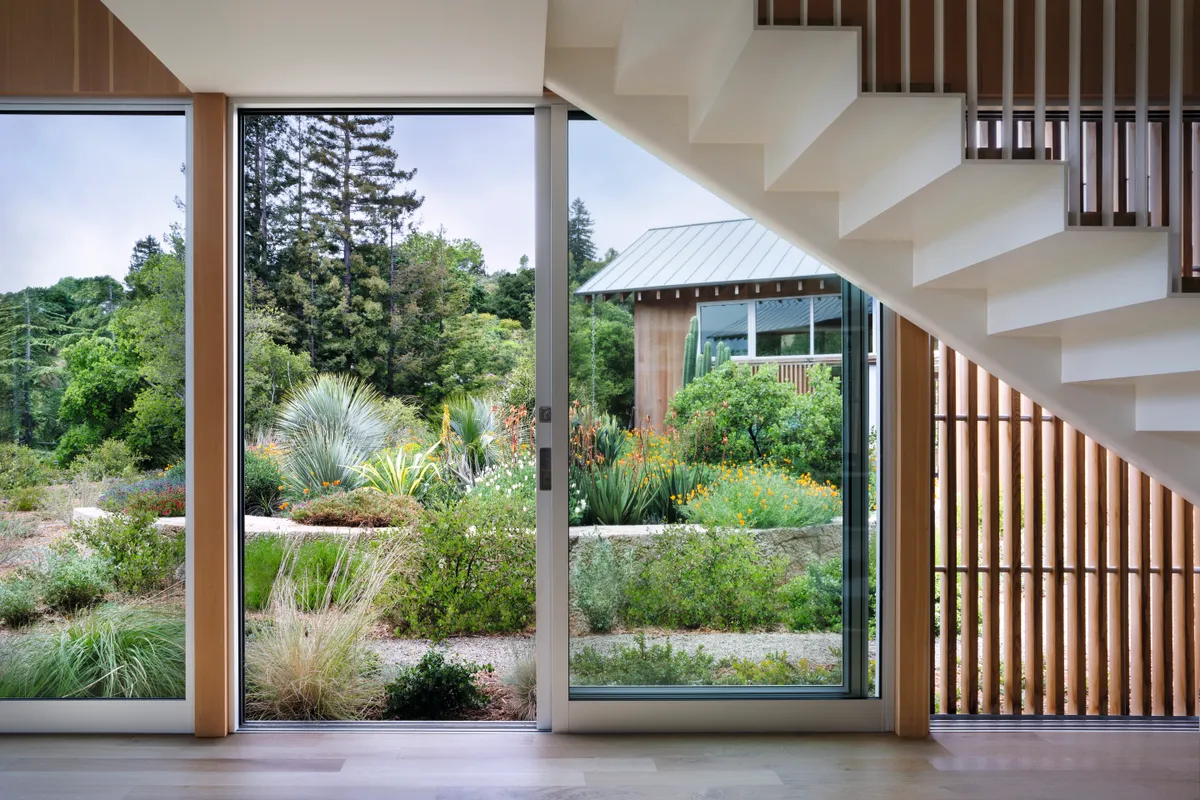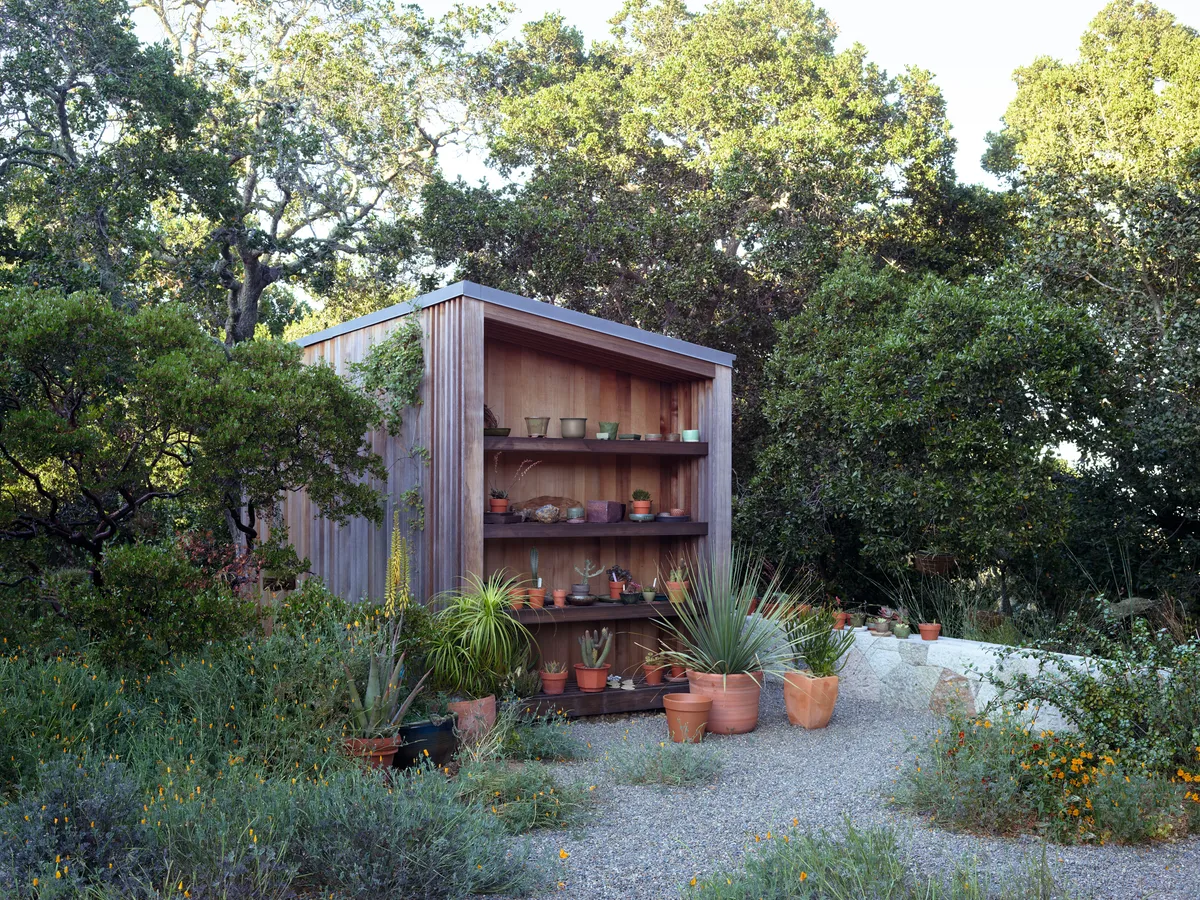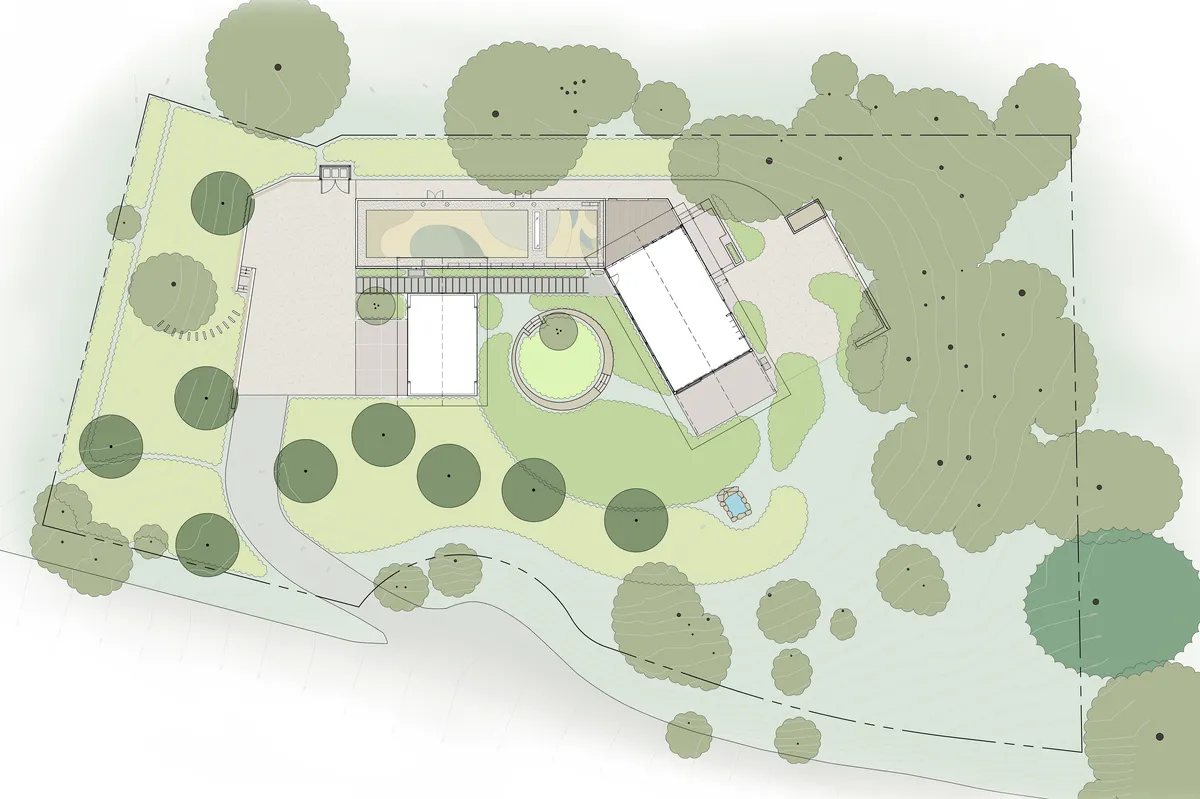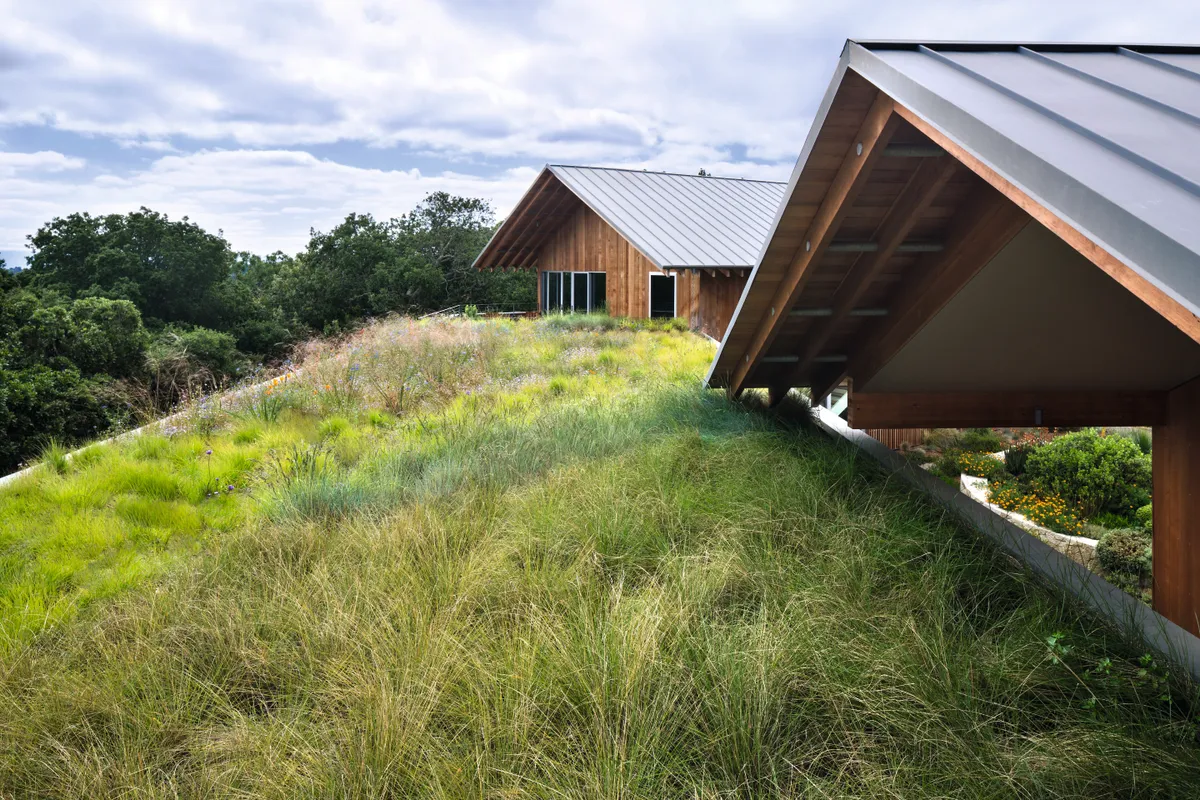It’s not often that a landscape architect gets to influence the placing of a new house, but that is what happened on this project in the Portola Valley in the San Francisco Bay Area. Scott Lewis, of Scott Lewis Landscape Architecture, was able to collaborate with Turnbull Griffin Haesloop Architects on moving three proposed interconnecting buildings six metres to the north. This created more garden space on the south side, and allowed the garden to wrap around the property and frame views to the west.

It also allowed for a potting shed and preserved an Arctostaphylos manzanita grove. The clients are artists and keen gardeners who wanted an informal garden that would blend into the surrounding landscape, known as oak chaparral. They also wanted to welcome wildlife – to the extent that they did not want boundaries.

They requested native, drought-tolerant plants and an attractive way to showcase their succulent collection. A green roof and water harvesting and storage had already been incorporated to the house design, and the conservation of resources on the property was paramount.

Scott proposed a “designed landscape” that would blend with the oak preserve beyond, using native and drought-tolerant plants and minimal hard landscaping.
The planting
The owner had collected a range of succulents that she wanted to consolidate, now housed within the tufa stone circle. “They now look like a giant table arrangement from inside the house.” The owner supervised the planting, and Scott’s team added fillers and trailing plants that drape down the side and give a little softness to the walls.

The property uses a grey water and rainwater harvesting system as a source of irrigation, devised in conjunction with a water management company. The key to water saving on this project, however, was the plant selection. “Native plants don’t need much irrigation,” explains Scott. “California normally gets its rain in the winter, between November and March, and that’s what they’re adapted to. We have no rain between April and October, but native plants don’t need water in summer, as they go dormant or lose their leaves. That said, our recent dry winters means there’s an increasing need for irrigation then.”

On top of the studio’s flat roof Scott created a meadow garden using eight different grasses, plus native wildflowers and bulbs that were chosen in collaboration with the clients and US grass expert John Greenlee. Providing interest throughout the year, it also helps to merge buildings with garden, and with the landscape beyond. It is planted using a tray system, with a 22cm depth at its deepest point to accommodate grasses.

The plants, mostly plugs and small plants in 9cm pots, were laid out on site, for an organic look. The shortest plants are near the deck in front of the bedroom, while the tallest grasses are at the end farthest from the house. Drip irrigation is used in summer, when the temperatures are typically above 30°C. “The plants are always green, for the visual effect but also for fire safety,” explains Scott.